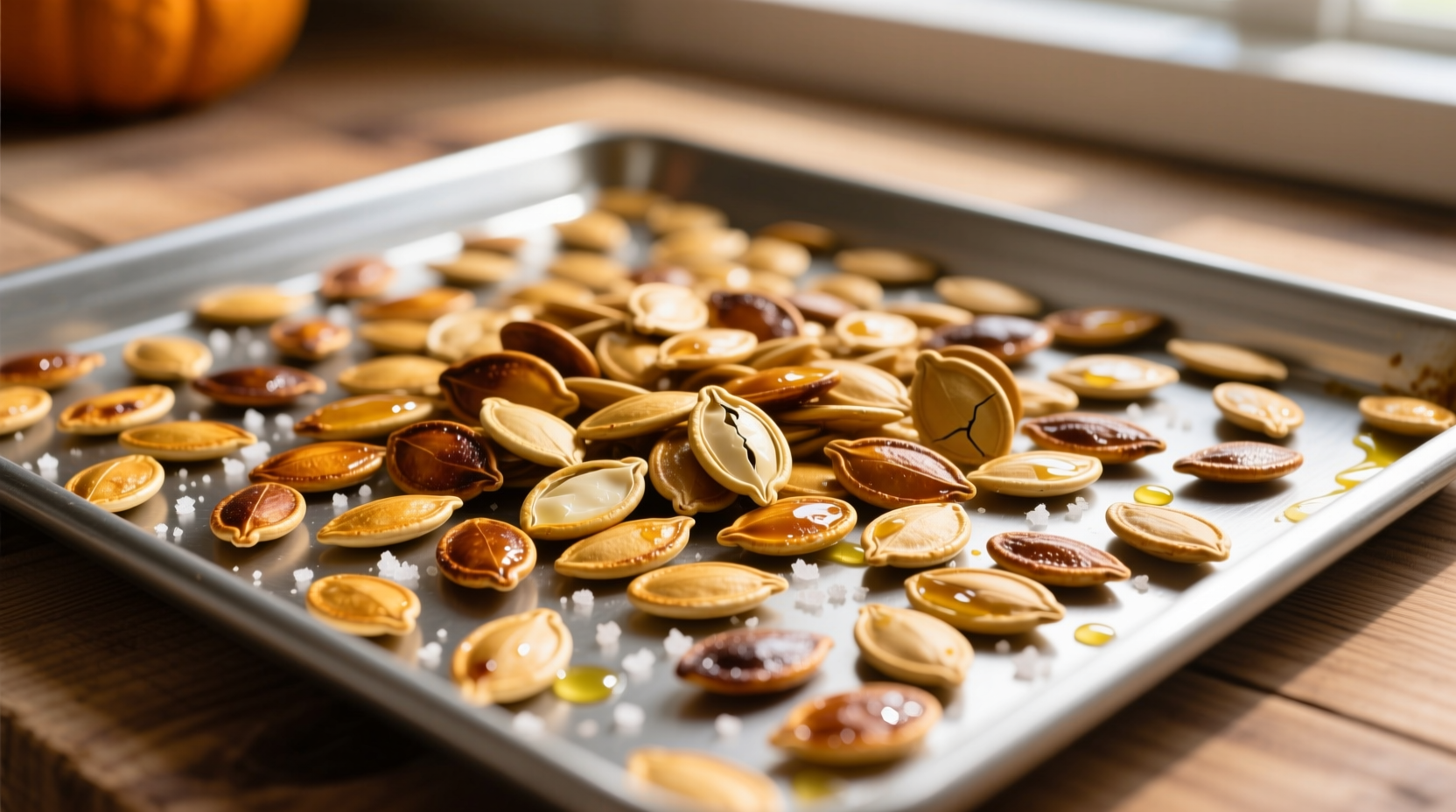The ideal temperature to roast pumpkin seeds is 300°F (150°C) for 30-45 minutes. This precise temperature ensures perfectly crisp seeds without burning, while preserving their nutritional value and maximizing flavor development. Roasting at this moderate heat allows seeds to dry thoroughly and develop a satisfying crunch throughout.
Discover the science-backed method professional chefs use to transform ordinary pumpkin seeds into a crunchy, flavorful snack. Whether you're preparing seeds from your Halloween carving project or using store-bought varieties, getting the roasting temperature right makes all the difference between perfectly crisp seeds and bitter, burnt disappointments. This guide reveals the optimal temperature range, timing variables, and professional techniques that guarantee success every time.
Preparing Your Pumpkin Seeds for Perfect Roasting
Before you even consider oven temperature, proper seed preparation sets the foundation for success. Start by thoroughly separating seeds from pumpkin pulp using your hands or a spoon. Rinse seeds under cold water in a colander, removing any clinging fibers. For best results, spread cleaned seeds on paper towels and let them air-dry for at least 2 hours—or preferably overnight. This crucial drying step prevents steam buildup during roasting that leads to soggy seeds.
"Many home cooks rush the drying process," explains Antonio Rodriguez, culinary expert specializing in flavor extraction techniques. "Taking time to properly dry seeds ensures they roast evenly rather than steam in their own moisture."
Why 300°F Is the Scientifically Optimal Roasting Temperature
Food science research confirms that 300°F (150°C) represents the sweet spot for roasting pumpkin seeds. At this moderate temperature, seeds lose moisture gradually while their natural oils slowly release, creating that signature crunch without scorching. Higher temperatures cause the exterior to burn before the interior dries completely, while lower temperatures extend cooking time unnecessarily and may leave seeds chewy.
| Temperature | Result | Time Required | Texture Outcome |
|---|---|---|---|
| 250°F (120°C) | Under-dried seeds | 50-60 minutes | Chewy, uneven texture |
| 300°F (150°C) | Optimal drying | 30-45 minutes | Crisp throughout |
| 350°F (175°C) | Exterior burns | 20-25 minutes | Bitter outside, soft inside |
| 400°F (205°C) | Severe burning | 12-15 minutes | Charred, inedible |
This temperature range aligns with recommendations from the USDA Food Safety and Inspection Service for safely drying plant-based foods while preserving nutritional content. The moderate heat allows seeds to reach the critical 160°F internal temperature needed to eliminate potential pathogens without compromising quality.
Step-by-Step Roasting Instructions at 300°F
Follow these professional techniques for foolproof results:
- Preheat your oven to exactly 300°F (150°C)—use an oven thermometer for accuracy as built-in thermostats often vary
- Toss thoroughly dried seeds with 1-2 teaspoons of oil (olive, avocado, or melted coconut work best)
- Spread seeds in a single layer on a parchment-lined baking sheet
- Roast for 30-45 minutes, stirring every 15 minutes for even exposure
- Seeds are done when golden brown and produce a hollow sound when tapped
"The stirring interval is critical," notes Rodriguez. "Pumpkin seeds contain varying moisture levels, so regular rotation ensures uniform roasting. Listen for that distinctive hollow sound—that's your auditory cue that moisture has fully evaporated."

Flavor Variations and Temperature Adjustments
While 300°F remains optimal for basic roasting, certain flavor profiles benefit from strategic temperature tweaks:
- Savory seasonings (salt, garlic powder, smoked paprika): Add after roasting to prevent burning
- Sweet coatings (cinnamon sugar, maple syrup): Reduce temperature to 275°F (135°C) and extend time to 40-50 minutes to prevent caramelization from burning
- Spicy blends (cayenne, chili powder): Add halfway through roasting for optimal flavor integration
Temperature sensitivity varies by seasoning type—sugar-based coatings require lower heat, while dry spices can withstand the full 300°F. Always apply wet ingredients (like honey or syrup) sparingly to avoid steaming the seeds.
Troubleshooting Common Roasting Problems
Even with proper temperature control, issues can arise. Here's how to fix them:
- Burning seeds: Your oven runs hot—verify with independent thermometer and reduce setting by 25°F
- Soggy seeds: Insufficient drying before roasting—extend air-drying time or increase oven temperature by 25°F for final 10 minutes
- Uneven roasting: Overcrowded baking sheet—use two sheets or roast in batches
- Bitter taste: Burnt seasoning—add dry spices after roasting next time
Remember that humidity affects drying time—on rainy days, extend the initial air-drying period by several hours. Altitude also impacts roasting; above 3,000 feet, increase temperature by 15-25°F to compensate for lower boiling points.
Storing Your Perfectly Roasted Seeds
For maximum freshness, store cooled seeds in an airtight container at room temperature. Properly roasted seeds maintain crispness for 2-3 weeks. For extended storage, freeze in a sealed container for up to 3 months—thaw at room temperature before serving to prevent condensation. Avoid refrigeration, which introduces moisture that softens the crisp texture you worked so hard to achieve.











 浙公网安备
33010002000092号
浙公网安备
33010002000092号 浙B2-20120091-4
浙B2-20120091-4